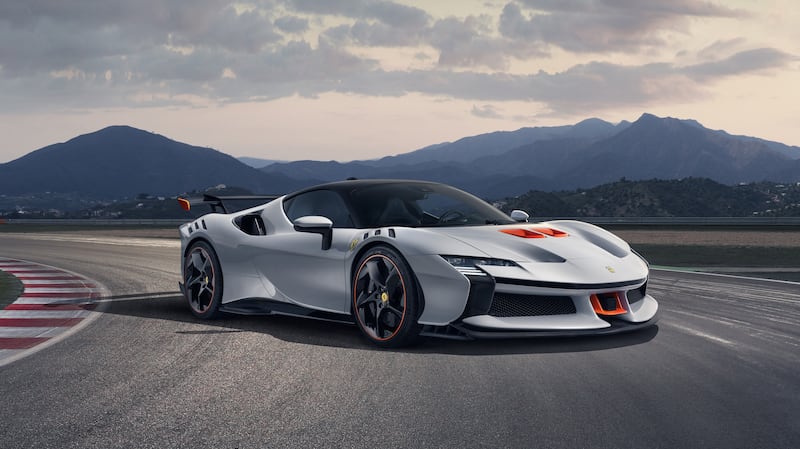Premium carmakers are currently facing one of the biggest challenges of their existence – how to go electric without losing their competitive edge or alienating their core audience. There’s no alternative, as the carbon-emission noose is getting tighter. The coming European legislation is especially draconian - from 2035, all new cars sold in the EU must have zero carbon dioxide emissions.
The transition to electrification is arguably less of a challenge for brands that churn out affordable mainstream cars than it is for their upmarket counterparts. After all, the likes of Ferrari, Lamborghini, Bentley and Maserati depend largely on sonorous V6, V8, V10 or V12 combustion engines to infuse their vehicles with an inimitable charisma.
So, how do these exalted marques dispense with engines that squash fuel and air to create an almighty bang – and unique soundtrack in the process – in favour of near-silent electric motors that are all but indistinguishable from one another?
Going electric while maintaining premium signatures
Ferrari chief executive Benedetto Vigna says there’s no way around electrification, but he argues this need not be a bad thing. Speaking to The National, he says: “Electrification is a must as we need to reduce emissions, but we can also use this to further enhance performance. Contrary to the general notion, electric motors are not silent; each has its own signature.”
The Prancing Horse is on track to launch its first-ever EV in the last quarter of next year, and Vigna promises the debutante will remain true to the brand’s core DNA. “The Ferrari motor will speak the language of the car,” Vigna says. “We will develop our own core components, so the first full-electric Ferrari will still be a Ferrari, leveraging the extensive know-how of our Formula One team.”

Vigna’s EV-embracing tone is echoed by former Rolls-Royce chief executive Torsten Muller-Otvos, who says that the new, fully electrified Spectre was built in response to demand from customers, who, in many cases, already own an electric vehicle from another manufacturer. “The guiding light is Rolls-Royce first, electric second. That’s why we also decided to go with classical Rolls-Royce proportions. It needs to look like a Rolls-Royce – monolithic, great stature, it carries proudly the pantheon grille,” Muller-Otvos told Car Magazine late last year.
“It drives like a Rolls-Royce, it accelerates like a Rolls-Royce, it wafts like a Rolls-Royce, it carries lovely features like starlight headlining, it has all the same materials – while being electric,” he says. “We also made the decision that with this car you could not get electric and combustion. The Spectre is only electric. All future Rolls-Royces from 2030 will be only electric, while maintaining what Rolls-Royce stands for. This should be the most dynamic RR ever in history. And it is.”
Poignantly, Muller-Otvos points out that Rolls-Royce’s USP is that its cars are smooth, quiet and torquey – characteristics that are easy to achieve with electric motors – making the transition to electrification easier than for brands such as Lamborghini and Ferrari, which rely largely on the sound and visceral appeal of a high revving, finely tuned combustion engine. Lamborghini recently rolled out its first series-production plug-in-hybrid model – the Revuelto hypercar – but in 2028, it will take the next step with the launch of the fully electrified Lanzador, a rakish crossover with a coupe-esque roofline.
Although raucous combustion engines have been a Lamborghini trademark since the Raging Bull’s 1963 inception, the brand’s chief technical officer, Rouven Mohr, says the coming Lanzador EV will not be a watered-down offering devoid of charisma. “We will not do mellow,” he told Car and Driver. “There are a lot of opportunities that you get from the electric drivetrain that are not possible with a combustion car. And at the moment no one is using them the way we plan to.
“I like the statement that the most ‘rowdy’ EV has to be a Lamborghini. At the end of the day, the difference will be the control algorithm, how you control the dynamic systems in the car to create an emotional connection. We will develop, in-house, our own functionalities. It will be completely different from what you see at the moment on the electric market,” Mohr adds.
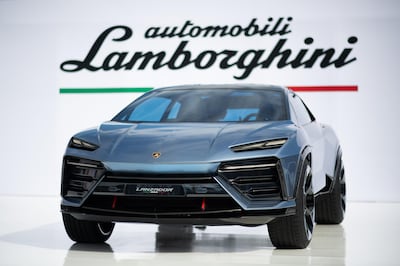
Like its Ferrari and Lamborghini compatriots, Maserati is a storied brand with a unique Italian sense of style and verve. What’s more, each car wearing the trident logo invariably has an evocative exhaust note, so the transition to electrification obviously needs to be skilfully navigated by the Modenese marque. Maserati chief commercial officer Bernard Loire says there’s no cause for concern. “We believe we can combine Maserati-ness – that experience – with an electric motor,” he told Car Magazine in September.
“At this moment, because we are in a transition period, we are offering both technologies. We will give the choice with the Grecale, a combustion engine or electric. Same with the GranTurismo.
“Future products will be launching with electric powertrains. The luxury experience and the performance experience, we have to deliver it, because that’s Maserati. The design must be timeless Italian design because that’s Maserati. An e-motor provides fantastic acceleration. We have our own sound signature,” he says.
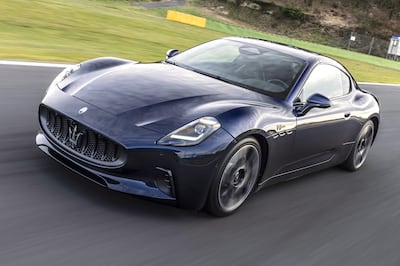
Loire suggests he doesn’t see major barriers to continuing to provide the full Maserati experience, particularly as the brand’s new audience – primarily the younger generation – likes luxury, but not necessarily because it is a V8 or a V6.
“Combining the newest technology, the newest in infotainment for instance, with the design and the luxury of a Maserati, will probably open new doors,” he adds.
Looking to sustainable materials
Century-old Bentley also has a full-electric future chalked out, according to board member and head of research and development Matthias Rabe. “The future of Bentley will be fully electric,” he tells The National. “We are working not just on one car, but a whole family.
“By 2025, we will have our first full-electric car; by 2026, all our cars will be plug-in hybrid or full electric; and by 2030, Bentley’s line-up will be entirely electric, with combustion engines banished entirely.
“Our strong message in our Beyond 100 strategy is to go full electric by the end of the decade. To do that, our machines not only have to be fascinating cars, but they must make people say: ‘Oh, that’s really a Bentley. That’s really a cool car.’
“Our EVs will be an outstanding combination of the classical strengths of Bentley, such as expert craftsmanship and materials, and building in sustainability and a more digital approach.”
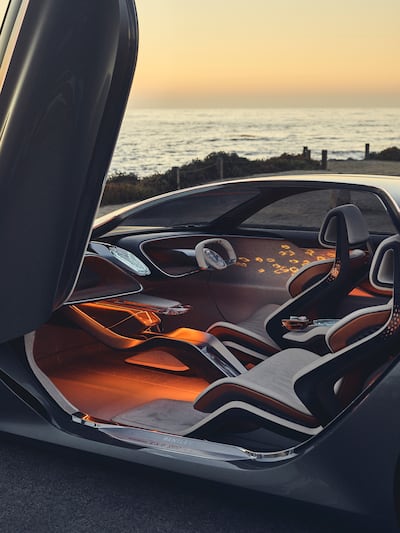
One example of Bentley’s craftsmanship and use of unique materials is its incorporation in the cabin of 5,000-year-old riverwood that was decomposing in lakes and rivers in East Anglia, England.
“We’ve been able to extract it, revitalise and polish it to turn it into a veneer with a unique finish,” says Bentley chief executive Adrian Hallmark. “So, you’ve got a 5,000-year-old veneer that looks amazing. What this means is that the future of luxury can be just as inspirational, even more so than in the past, in terms of materials, colours and trim. We just have to make sure we do it in a sustainable way.”
Hallmark says this focus applies not only to cars, but also to the processes that go into making them. “Our production at Crewe is already carbon neutral, by taking energy from the solar farm down the road and by buying green energy for whatever else we need.”
However, it’s not all plain sailing on the electrification front as Mercedes-Benz and Audi are among several brands that have had to cut back their EV production targets due to lacklustre customer demand for vehicles with a plug.
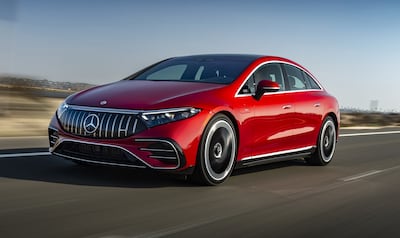
Mercedes-Benz chief executive Ola Kallenius warns that price parity between EVs and combustion-powered cars is still “many years away”, and some consumers are deterred by what they perceive as inadequate recharging infrastructure, as well as the fact that at least 30 to 40 minutes are required for the car to be charged 80 per cent – and that’s at a fast-charging facility.
Environmental impact of electric vehicles
There are also questions about EVs’ true environmental friendliness. While it’s true that these vehicles emit no carbon dioxide while driving, their benefit is reduced if the electricity used to recharge them was produced by a coal-fired power plant.
In addition to that, manufacturing an EV has a higher carbon footprint than producing a conventional car, and there’s also an environmental cost to mining the lithium, cobalt and nickel that goes into making their batteries.
Depending on how you calculate it, you’d need to drive an EV for between 80,000km and 120,000km before you reach the break-even point in terms of carbon dioxide emissions compared with an equivalent combustion-powered car.
In other words, EVs may not be the ecological panacea they’re being made out to be by lawmakers and environmental groups.
Be that as it may, the electrification gauntlet has been thrown down to carmakers by government legislation, and even the premium marques aren’t exempt. They may not have wanted to go down this path just yet, but they’re embracing the challenge all the same.
